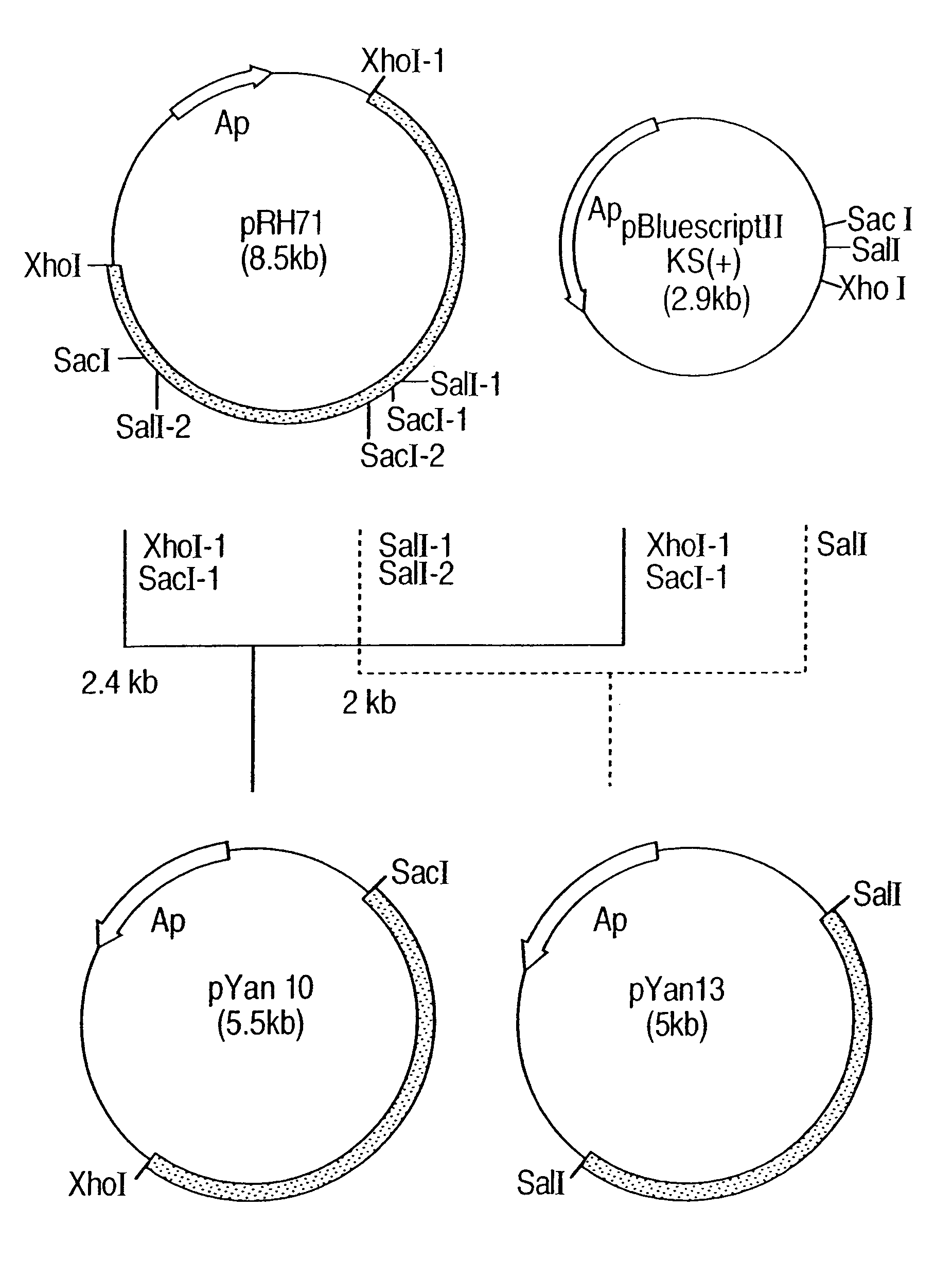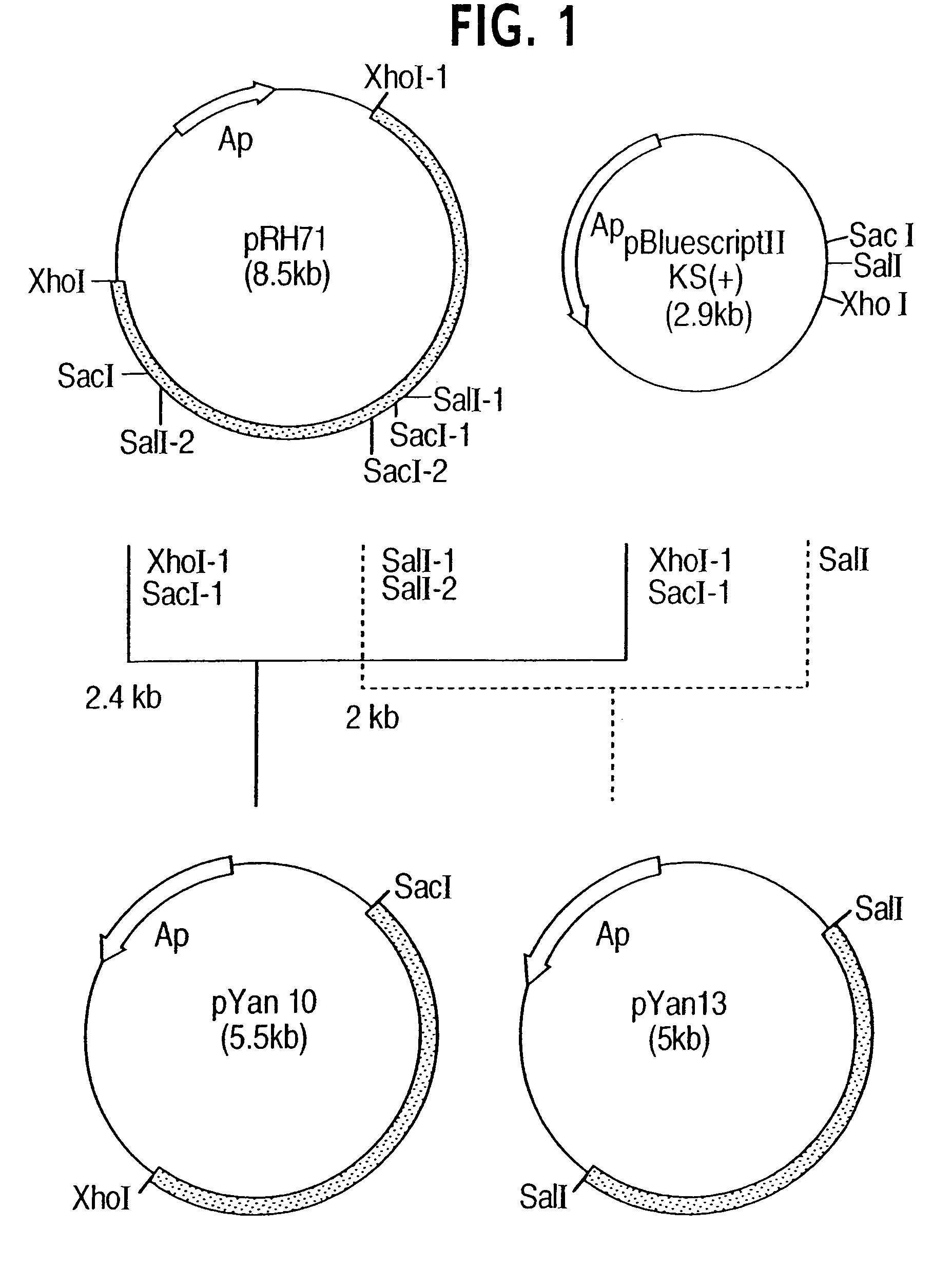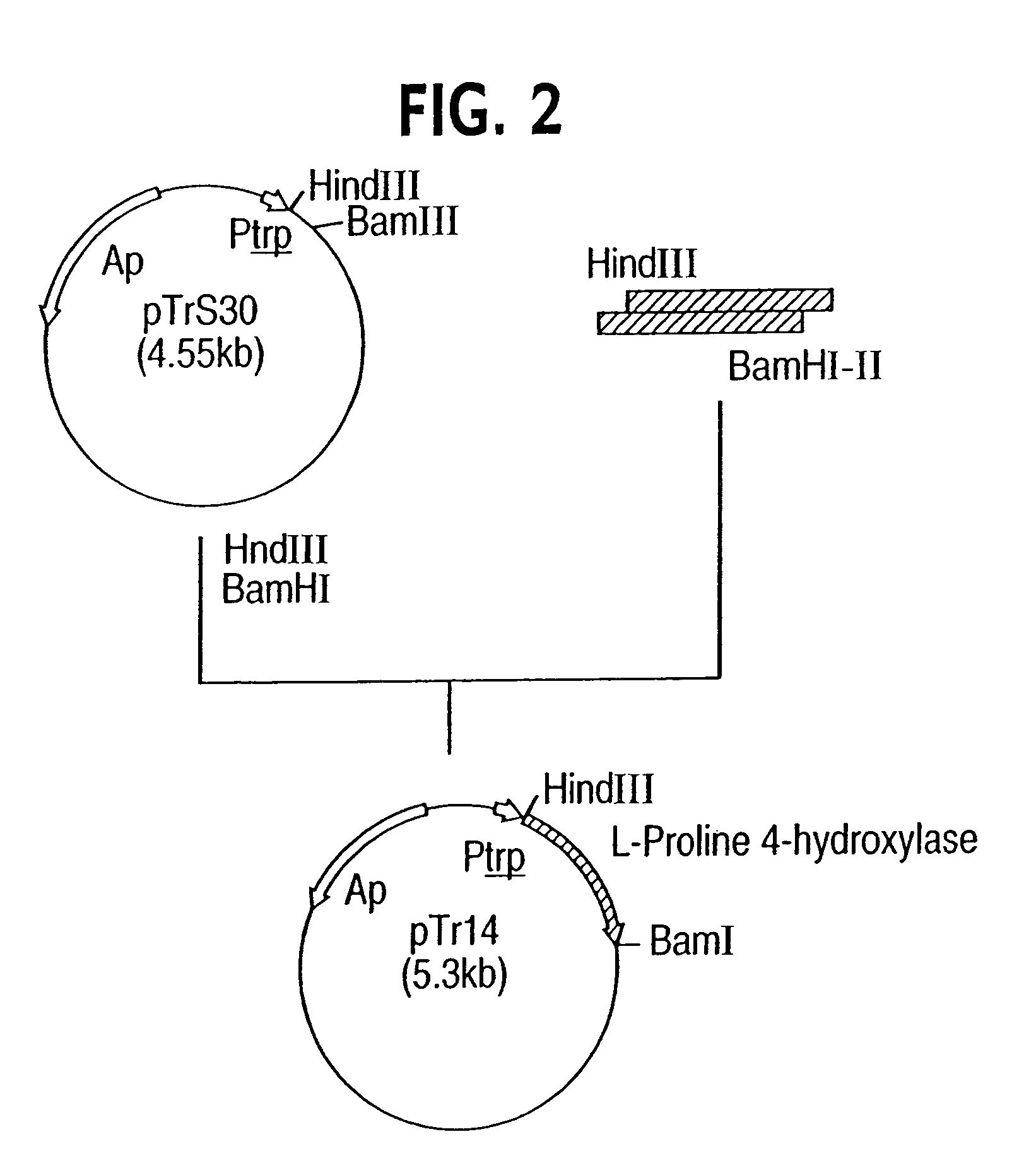Process for producing trans-4-hydroxy-L-proline
a technology of trans-4-hydroxy-l-proline and process, which is applied in the field of process for producing trans-4-hydroxy-l-proline, can solve the problems of low productivity of trans-4-hydroxy-l-proline, high cost of substrate for producing trans-4-hydroxy-l-proline, and difficult to obtain, so as to achieve low cost and strengthen the biosynthesis activity of proline. , the effect of low cos
- Summary
- Abstract
- Description
- Claims
- Application Information
AI Technical Summary
Benefits of technology
Problems solved by technology
Method used
Image
Examples
example 1
(1) Production of Trans-4-hydroxy-L-proline by Dactylosporangium sp. RH1:
[0226]SR3 medium comprising 1.0% glucose, 1.0% soluble starch, 0.5% yeast extract, 0.5% tryptone, 0.3% meat extract and 0.05% magnesium phosphate was adjusted to pH 7.2 with 6N NaOH, was put in test tubes (diameter 25 mm×length 200 mm) in an amount of 10 ml each and sterilized at 120° C. for 20 minutes. One loopful of cells of Dactylosporangium sp. RH1, that had grown in HT-agar plate medium comprising 1% soluble starch, 0.2% NZ amine, 0.1% yeast extract, 0.1% meat extract and 1.5% agar, adjusted to 7.2 with 6N NaOH, and sterilized at 120° C. for 20 minutes, was inoculated into the above-mentioned SR3 medium in each test tube, cultivated at 28° C. for 2 days with shaking. The resulting culture was used as a seed culture in the following steps.
[0227]Separately, Df1 medium comprising 5% soluble starch, 1.5% soybean meal, 0.05% monopotassium phosphate, 0.05% magnesium sulfate 7 hydrate and 0.5% calcium carbonate, ...
example 2
Purification of Trans-4-hydroxy-L-proline:
[0242]The seed cultivation was carried out in the same manner as in (1) of Example 1, using 2 liter Erlenmeyer flasks each containing 200 ml of SR3 medium. Df1 medium was put in 5 liter jar fermenters in an amount of 2 liters each and sterilized at 120° C. for 20 minutes. The seed culture was inoculated in the Df1 medium in each jar fermenter under germ-free condition and cultivated under the condition of 700 rpm and 1 vvm, at 28° C. for 2 days. During the cultivation, the pH of the medium was not adjusted. The thus-obtained culture medium was centrifuged at 7,000×g for 10 minutes at 4° C. to obtain wet cells in an amount of 75 g per liter of the culture. A part of the wet cells was washed with a physiological saline at 4° C. and recentrifuged. If desired, the thus-obtained wet cells were frozen and stored at −80° C., and the frozen cells were thawed before use.
[0243]Separately, 400 g of the wet cells was suspended in 2 liters of the reactio...
example 3
(1) Production of Trans-4-hydroxy-L-proline by Amycolatopsis sp. RH2:
[0246]SR3 medium was put in test tubes (diameter 25 mm×length 200 mm) in an amount of 10 ml each and sterilized at 120° C. for 20 minutes. One loopful of cells of Amycolatopsis sp. RH2 that had grown in HT-agar plate medium was inoculated in the above-mentioned medium in each test tube, cultivated at 28° C. for 2 days with shaking, and used as a seed culture in the following steps.
[0247]Separately, Df1 medium was put in test tubes (diameter 25 mm×length 200 mm) in an amount of 10 ml each and sterilized at 120° C. for 20 minutes. One ml of the seed culture was inoculated in the medium in each test tube under germ-free condition and cultivated at 280° C. for 2 days with shaking. The thus-obtained culture was centrifuged at 7000.times.g for 10 minutes at 4° C. The cells thus separated were washed with 100 mM TES buffer (pH 7.5) and then recentrifuged. In 1.5 ml of a reaction mixture which had been prepared by adding 1...
PUM
| Property | Measurement | Unit |
|---|---|---|
| temperature | aaaaa | aaaaa |
| v/v | aaaaa | aaaaa |
| temperature | aaaaa | aaaaa |
Abstract
Description
Claims
Application Information
 Login to View More
Login to View More - R&D
- Intellectual Property
- Life Sciences
- Materials
- Tech Scout
- Unparalleled Data Quality
- Higher Quality Content
- 60% Fewer Hallucinations
Browse by: Latest US Patents, China's latest patents, Technical Efficacy Thesaurus, Application Domain, Technology Topic, Popular Technical Reports.
© 2025 PatSnap. All rights reserved.Legal|Privacy policy|Modern Slavery Act Transparency Statement|Sitemap|About US| Contact US: help@patsnap.com



